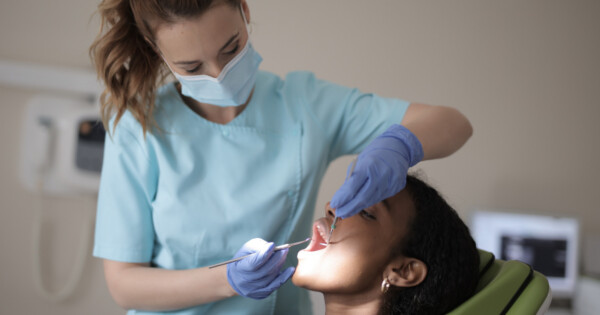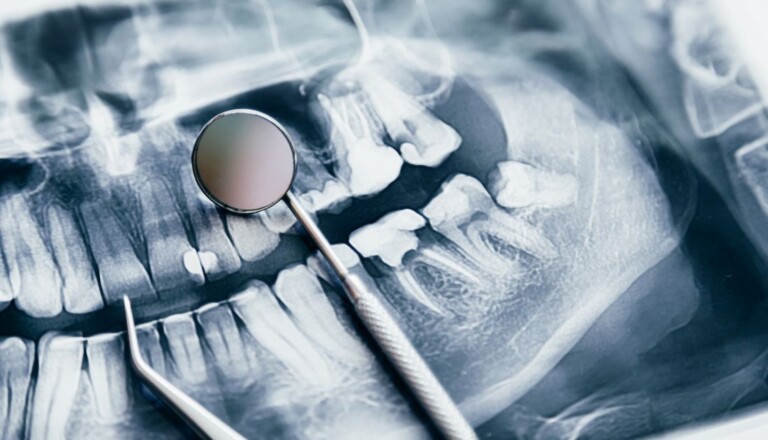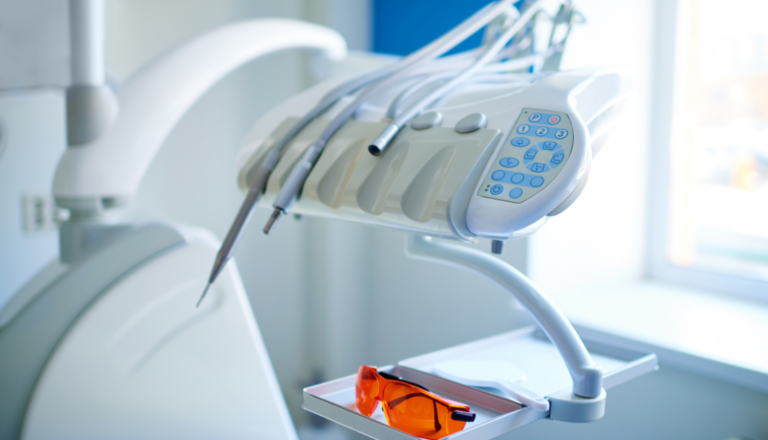Should I Open
A Second Dental Practice?

Key Considerations for Dental Practice Owners
minute read
Skip Ahead
Introduction
Many dental practice owners choose to work in one office for their entire careers, achieving both financial success and personal fulfillment in their single practice. However, some dentists decide to broaden their geography and locations by opening additional practice locations to reach new patients and reach greater financial goals.
This is a major career move that can be extremely advantageous; however, it can also come with financial risk and significant time constraints. Thoughtful analysis, research, and deliberation are necessary to making this decision. Here are key considerations before you open your second practice.
Recommendations Summary
Analyze Existing Practice
- Conduct a detailed financial analysis of the existing practice.
Evaluate Acquisition Opportunities
- Prioritize purchasing an existing practice over a start-up.
- Ensure the new location complements rather than competes with the existing one.
Assess Your Readiness
- Consider your time availability and stress tolerance.
- Plan for effective delegation and management.
Staff Strategically
- Ensure proper staffing and associate dentist readiness.
- Prepare for potential impact on existing practice productivity.
Monitor Key Performance Indicators
- Continuously monitor and optimize KPIs for sustained growth and profitability.

A Dentist’s Guide To Acquiring A Practice
A Dentist’s Guide to Acquiring a Practice From Preparation to Closing & Beyond Keep Reading or Download the PDF ↓ minute read Skip...

Dental Practice Transitions: What You Need To Know
Dental practice transitions are complex processes that involve the transfer of ownership or management of a dental practice from one dentist to another. Whether it’s...

Pros and Cons: Starting a Dental Practice vs. Buying an Existing Practice
Starting a Dental Practice vs. Buying an Existing Practice Key takeaways: Buying an existing dental practice: Advantages include being able to work immediately, avoid patient...
Benefits of Opening a Second Practice
Expanding your practice into a multi-location model can be an exciting career move. The potential benefits of opening a second practice include:
- Increased revenue: Expanding to a second location allows you to tap into a new market, increasing your patient base and, consequently, your revenue. The added income can also help cover fixed costs more effectively.
- Brand growth: A second practice helps establish your brand as a trusted name in dentistry. With multiple locations, your brand presence becomes stronger.
- Risk diversification: By having multiple practices, you reduce the risk associated with relying on a single location. If one practice experiences a downturn, the other can help balance the financial impact.
- Personal fulfillment: Expanding your practice is a sign of growth and success. It can provide a sense of accomplishment and motivation to continue innovating and improving your services.
These benefits and more can make opening a second dental practice a strategic move for expanding your business and enhancing your professional career.

Dental Practice Transitions: What You Need To Know
Dental practice transitions are complex processes that involve the transfer of ownership or management of a dental practice from one dentist to another. Whether it’s...

What Is Liquidity & Why Is It Important For Practice Ownership?
Liquidity includes savings, stocks, bonds, mutual funds and any money you can take out of an account without penalty. Retirement accounts, like 401(k)s, IRAs, Roth...

Finding A Practice Lender & Bank: Choosing Wisely Today For Your Practice Tomorrow
Choosing a practice lender and banking partner for your acquisition, startup or any other practice-related transaction is a very important decision. More than just rate...
Evaluating Current Practice Performance
Financial Performance Review
As you decide whether expansion is right for you, the first step in the process should be reviewing the practice’s financial performance, including a review of relative financial statements, 3 years of business tax returns, and interim profit and loss statements if applicable.
Beyond the picture the financial statements portray, there are other more granular indicators, both quantitative and qualitative, that need to be analyzed and fully understood as well.
KEY CONSIDERATIONS:
- Is there still room to grow within your current space and setup?
- Are the current operatories being used at full capacity or beyond?
- Are extended office hours (e.g., evenings and/or Saturdays) being offered?
- Should you invest in a consultant and marketing to increase revenue in your existing practice first?
- Is the current practice performing well enough financially to support a second location, especially if it is a start-up?
- Are your systems and processes ready to be scaled to another team?

What You Need to Know About Buying a Dental Practice
What You Need to Know About Buying a Dental Practice Key takeaways: Buying a dental practice allows the owner to get started right away with...

The Ultimate Guide to Buying a Dental Practice
Key takeaways: Start the process with a team of experts to assist you. Once the purchase is finalized, don’t wait to create a legal business...

Owner vs. Associate: What to Know When Considering Dental Practice Ownership
Owner vs. Associate: What to Know When Considering Dental Practice Ownership Key takeaways: Private practice dentistry owners often receive higher pay and more benefits than...
Acquiring vs. Starting a Second Location
When considering whether to buy or start your second location from scratch, there are advantages and disadvantages to both options. We outline some of the most common benefits and drawbacks below, but choosing the right option for your practice should include consideration of these plus the opportunities and circumstances that are unique to your situation.
Purchasing an Existing Practice
Ideally, an owner will look to purchase an existing practice as a second location because it eliminates many, if not all, of the uncertainties and complications that come with trying to build a second location from scratch. Although buying an established practice is typically the more expensive alternative, in most cases, it ultimately proves to be well worth the investment.
ADVANTAGES
- Turn-key operation with an immediate patient base, equipment, and cash flow
- Typically has experienced staff already in place
- Avoids the lengthy process of building a patient base from scratch
DISADVANTAGES
- Updates may be needed
- May need to adapt to inherited reputation and dynamics
CONSIDERATIONS
- Location should not cannibalize the same patient population as the existing office but be within reasonable proximity to avoid unnecessary travel time.
Starting from Scratch
A prospective borrower may consider opening a second location from the ground up to allow for greater customization in design, staffing, location, and more.
ADVANTAGES
- Make the business your own
- Place the business in your ideal location
- Invest in new equipment and technology
DISADVANTAGES
- Existing practice will be further stressed and leveraged, which could potentially put a strain on cash flow.
- A new practice must be built, staffed, and developed from the ground up.
Financial Cushion
Before starting the financing process, ensure that you have a comfortable cash/savings cushion (3-5 months operating expenses) to allow a greater margin for error.

What You Need to Know About Buying a Dental Practice
What You Need to Know About Buying a Dental Practice Key takeaways: Buying a dental practice allows the owner to get started right away with...

What You Need to Know About Starting a Dental Practice From Scratch
What You Need to Know About Starting a Dental Practice Key takeaways: Starting a dental practice from scratch allows full decision making in all aspects...

Pros and Cons: Starting a Dental Practice vs. Buying an Existing Practice
Starting a Dental Practice vs. Buying an Existing Practice Key takeaways: Buying an existing dental practice: Advantages include being able to work immediately, avoid patient...
Time, Stress, & Operational Considerations
Owner’s Commitment & Stress Level
Another important consideration of expanding to a second location is the amount of time you can commit to operating a second location and the stress that could accompany this endeavor. A second practice location is not a passive investment – it will require your full and undivided attention.
Owning just one practice requires significant time, effort, resources, patience, attention, and management. A second location doubles these investments and responsibilities, especially if you plan to be hands-on at both offices. (Distance/geography and even demographics could play a big part in this decision.)
As the owner of a single location, you are able to be onsite every single day. If something were to “fall through the cracks,” or if an employee did not do something the way it should be done, you are right there to notice the problem and quickly correct it. This is not the case with a second location.
DELEGATING
Delegation is one way to manage the responsibilities of a second practice. Even if you decide to delegate much of the day-to-day responsibilities of the second location to key staff members or an associate dentist, you will still need to devote time to monitoring the operations at the second location to ensure processes and procedures are being appropriately followed.
As you prepare to open a second practice, it’s important to prepare for the additional responsibilities and solidify a strong team to help make the transition to two practices as smooth as possible.
Staffing for a Start-up Second Location
Purchasing an existing practice means you will likely already have experienced staff in place, but if you plan to start your second location from the ground up, you will need to have a staffing plan in place.
For successful operation from day one, it is imperative that enough resources are available, including the proper number of hygienists, dental assistants, and a receptionist. Rotating existing staff between both locations may be a solution initially, assuming you have enough staff to cover both adequately.
THE BALANCE OF AN OWNER'S ROLE
Early on, a hybrid model can be employed where you spend a majority of time practicing at the first location until patient demand at the second location sufficiently ramps up. Then, you can begin to devote a more significant amount of time there.
This change will affect production at the first practice location, as it is literally impossible for you to see patients in more than one place at the same time. This is why it is important to have a dependable, loyal associate dentist on your team.
An Associate Dentist is Essential
Having an associate dentist will help you ensure both locations are maximally productive. Choose a trusted partner that shares your goals and outlook on your practice. Consider offering them ownership interest to indicate your investment and trust in the partnership.
Ultimately, the success of the second location and the organization as a whole relies imperatively on having key support staff in place along with a reliable, dedicated, and productive associate seeing patients at one location while you are working at the other.
The goal is to have a fully operational and profitable second practice (with no negative impact to the existing practice), so a full and accurate assessment of staffing needs every step of the way is critical.

Do Student Loans Affect My Ability To Buy A Practice?
A question we get asked frequently is “Will my student loans prevent me from buying or opening my own medical, dental or veterinary practice?” Doctors...

Dental Practice Transitions: What You Need To Know
Dental practice transitions are complex processes that involve the transfer of ownership or management of a dental practice from one dentist to another. Whether it’s...

Finding A Practice Lender & Bank: Choosing Wisely Today For Your Practice Tomorrow
Choosing a practice lender and banking partner for your acquisition, startup or any other practice-related transaction is a very important decision. More than just rate...
Key Performance Indicators
One of the most important steps in preparing to open a second location is to carefully evaluate the existing practice to determine if it can financially support starting up a second location. This is where the examination of key performance indicators (KPIs) comes into play.
KPIs are integral in determining the success of the practice because they allow you to precisely assess your practice’s growth, profitability, and overall stability in the context of building a profitable second location.
Key KPIs to Evaluate
There are seven key indicators to examine before expansion takes place. (The ADA recommends evaluating the last 3 months of data on the below KPIs to get a true snapshot of practice health.)
1. PRACTICE PRODUCTION
Production, a practice’s expected revenue in a given time frame, is one of the most fundamental KPIs to consider when evaluating the overall financial health of a practice. Without production, there can be no revenue.
Production can be affected by several variables including:
- Overall team efficiency
- Hygiene productivity
- Scheduling
- Case acceptance
Industry Standards:
According to the ADA, in a generally healthy practice, the dentist(s) should be generating 75% of production, with the hygiene department providing the other 25%. Current industry standards set daily production goals for dentists at $4,500-5,000, and $750-1,000 for hygienists, equating to annual production goals (assuming 1 full-time dentist with 2 full-time hygienists) totaling between $1,152,000-1,344,000.
Production Factors to Evaluate
While evaluating practice production, you should consider:
Production per patient in order to understand if a maximum amount of production is being obtained from each patient. For instance, if average production per patient is declining, revenue will decline as well, which means expanding to a second location should be off the table.
There are ways to maximize production per patient including expanding procedure offerings (e.g. such as teeth whitening, sleep apnea treatments, diagnostic programs, etc.).
Case acceptance is a core component of driving production and top-line revenue and is integral to the overall financial health of a dental practice.
On average, according to the ADA, case acceptance rates for the typical dental practice range from around 50-60% for established patients, and 25-35% for new patients. The ADA recommends that practices aim for approximately 85% case acceptance in order to materially increase production.
As a general rule, production metrics should be tracked on a weekly basis, as it’s that important in determining if production is trending in the right direction.
2. ACTIVE PATIENT COUNT
Active patients are those who have been seen in a practice within a defined set amount of time, (typically the past 12 to 18 months). Although active patient count is an incredibly important metric, many practitioners are not aware of this number.
The Importance of Active Patient Count
While total patient records may be very high, a practice is only producing revenue on patients who actually come into a practice for treatment. Hence, the active patient base is responsible for the ongoing cash flow to a practice.
Industry Standards
According to Jarvis Analytics, a good general benchmark for a full-time, one-doctor dental practice is 1,600-1,800 active patients. Any practice significantly below these numbers may not be completely filling the schedule (or may need to examine the effectiveness of their recall system*), so it is important to address these numbers before opening a second location.
A practice that exceeds these numbers may be cramming too many patients into the schedule, which may be a fairly good indicator the practice can support expansion.
*A recall system is put in place by a dental practice to support the proper continuing care of their patients by scheduling regular checkup appointments for patients.
3. NEW PATIENTS & PATIENT ATTRITION
The average dental practice can expect to see an approximate 17% decrease in its patient base each year, due to patients relocating, having changes in insurance coverage, passing away, or numerous other reasons. If a practice has the desired 1,600-1,800 active patients, this equates to losing 270-300 patients per year.
New Patient Goals
To continue to grow, practices need to replace patients at a rate of at least 20-25 new patients per month, and the number of new patients should increase 10-15% annually.
Although the new practice may be in a different location with different demographics, if the current practice is unable to attract a sufficient number of new patients, marketing strategies should be examined, adjusted, refocused, or expanded. Consider:
- Improve your website: Many patients find a new healthcare provider through search engines. Updating your website and focusing on SEO will help more patients find your practice.
- Ask for reviews: Encourage your happy patients to leave reviews. Use a referral program to reward patients for referring new patients.
- Utilize social media: Use organic and paid social media to communicate your services to your target audience.
These are just a few of the many ways you can optimize your marketing strategies to attract new patients. These can help you meet the patient goals of your first practice and prepare you to open your second location.
4. PRACTICE COLLECTIONS
Production is very important, but it only really matters if a practice is actually collecting on said production. Collections percentages can be calculated by dividing a practice’s total collection by the total adjusted (net) production.
Total Collection/Total Adjusted (Net) Production x 100 = Total Collection Percentage
For continued growth, successful dental practices should collect 98% of their total adjusted production (gross production less adjustments like insurance write-offs or discounts). Unfortunately, the average practice collects a lower amount at approximately 91%.
While 91% may seem like an acceptable level, this can result in material financial losses. If a practice is losing revenue on 9% of production, a practice producing $100,000 a month will be losing over $100,000 of revenue annually.
If collection percentages are not to the level where they should be, you should evaluate specific business processes to see where improvements can be made. For instance, mistakes on insurance claims forms, not regularly reviewing insurance payor aging reports, and not collecting payments upfront can all result in an inadequate collections process, which could result in lower collections percentages.
Tips for Improving Collection
- Require same-day payment
- Verify patient insurance before appointments
- Keep billing and payment posting up-to-date
5. OVERHEAD
Median overhead for dental practice in the U.S. is around 62%, and the average is approximately 75%. Ideally, overhead expenses should be under 60% for general dental practices.
The saying goes, “you must spend money to make money,” and that rings true with expanding a dental practice. If you decide to add a second location, you are also adding more overhead, including paying more staff (one of the biggest portions of practice overhead), buying more supplies, and paying utilities at a second location. It is important to find ways to decrease/minimize unnecessary overhead at the existing location in preparation of the adding of a second one.
Strategies to Right-Size Overhead
- Identify areas of overspending (e.g. personnel, supplies, lab)
- Increase practice efficiency
- Evaluate/right-size fee schedules and subscription plans to increase value
6. PRACTICE PROFIT
Profit is a clear frontrunner when it comes to KPIs, as it combines the success of both collections and production, as well as overhead. On average, dental practice profits hover at around 30-40%, with an average overhead percentage of around 60-70%.
Evaluating Profits
EBITDA (Earnings Before Interest, Taxes, Depreciation, and Amortization) is one way to evaluate profits. However, a much more accurate indicator of profitability and the overall health of a dental practice is to calculate Seller’s Discretionary Earnings (or SDE).
Seller’s Discretionary Earnings = EBITDA + add-backs + doctor’s compensation
SDE represents the owner’s true take-home value or “economic benefit” of running the practice. Remember, in the small business world, owners can compensate themselves in different ways. So SDE is vital to helping a bank answer the fundamental question “How much does a dentist really make by owning this practice?”
SDE is always calculated before debt service, which means that SDE would not capture if you are paying a mortgage on the building or any other long-term expense financed with debt.
Importance of SDE
SDE is a more precise indicator of a practice’s relative financial health than EBITDA. For instance, if looking at a practice that is producing $1.2 million (in revenue) where SDE is only $175,000, something is wrong with that practice. That is a discrepancy that a lender would need to understand before agreeing to finance a second location.
You should be taking home more based on empirical data that has accumulated over time. SDE tells you and your lender how much cash is left over in the practice to support a second location.
7. COST OF EXPANSION
If collection rates are high, profits are strong, and your current practice is thriving, you should still consider how much of that profit is to be invested into a new practice location rather than into your pocket. Can the current practice support the costs of starting a new practice, and still generate an acceptable level of profit for you and for the bank looking to finance the second location?
It can cost up to $600,000 on average to start a new practice location from scratch. Purchasing an existing practice will cost even more, including funds needed for renovations, upgrades, and technology updates.
Start-up costs aside, a new practice early on is going to have monthly expenses that are not covered by income generated from that location, which will lead to cash burn. It can be challenging to attract patients from day one to the new location while also keeping the practice fully stocked (and the lights on).
New practices can expect to face monthly operating costs of $67,500-70,000 during the initial months of business operations. This consists of salary, rent (assuming the owner is renting space), supplies, and other variable costs, and other expenses.
A significant expense will be payroll. Depending on the size of the practice and how it will be staffed, you should expect to set aside approximately $31,000 per month for salaries. Based on a hypothetical arrangement that includes 1 associate dentist (with an average gross salary of $180,000), a full-time hygienist ($77,000), 2 dental assistants ($40,000), and a receptionist ($32,000), you could be looking at approximately $369,000 per year in salaries – which is a heavy burden when also considering the initial capital investment needed to get the practice off the ground.
You should also expect to set aside up to 10% of total revenue for other expenses, such as marketing, advertising, supplies, and utilities. While the new practice will presumably begin to produce enough revenue to offset these costs, and then become profitable ultimately, you should have contingency plans in place if there’s a slow start (when starting a practice from the ground up).

3 Tips for Preparing for a Dental Practice Acquisition
Acquiring a dental practice is a major financial and personal undertaking. It’s important to be prepared before you take the plunge. Here are three important...

Dental Practice Transitions: What You Need To Know
Dental practice transitions are complex processes that involve the transfer of ownership or management of a dental practice from one dentist to another. Whether it’s...

What You Need To Know Before Buying New Dental Equipment & Technology
As a dental practice owner, deciding to incorporate new technology and equipment is a step toward improving efficiency and quality of care for your patients. ...
Deciding to Open a Second Practice
Ultimately, there is no one set metric or number that triggers the go-ahead to expand to a second location, but it is important to have a comprehensive and granular understanding of the overall health of your existing practice before making the decision to expand to a second location.
It is a multi-faceted endeavor that requires immense business savvy and careful deliberation and planning, including weighing risks versus rewards. Practice owners who diligently stay up-to-date on the aforementioned KPIs (and understand what the trends really mean as it relates to the health of the existing practice) will be able make a truly informed decision about the best course of action.
Make sure the original office is “firing on all cylinders.” If you are already running a highly successful practice, which includes being able to implement efficient processes, policies, and systems and motivate and retain staff, a second practice may be the right decision for you.
Final Considerations
For many practice owners, expanding to a second location pays off in the long run. These owners are often already operating a highly successful practice to start with while also possessing the necessary personal characteristics that thrive on conquering the challenges of such a complex and risky venture that come naturally with expanding to a second location. Weighing the pros and cons of this endeavor and understanding the performance of your current practice can help you make the right decision.

A Dentist’s Guide To Acquiring A Practice
A Dentist’s Guide to Acquiring a Practice From Preparation to Closing & Beyond Keep Reading or Download the PDF ↓ minute read Skip...

Dental Practice Transitions: What You Need To Know
Dental practice transitions are complex processes that involve the transfer of ownership or management of a dental practice from one dentist to another. Whether it’s...

Finding A Practice Lender & Bank: Choosing Wisely Today For Your Practice Tomorrow
Choosing a practice lender and banking partner for your acquisition, startup or any other practice-related transaction is a very important decision. More than just rate...
Finding the Right Lender for your Second Location
Choosing the right lender for your second location is a very important decision. The relationship you create with your lending bank, the support and services they provide, and how their structure allows you to focus on your patients are incredibly important factors that should be considered.
Panacea Financial provides lending and banking services designed with dentists in mind. The Panacea Practice Solutions team has experts who can assess the reasonableness of fair market value sales multiples. Through creative deal structuring and financing, competitive pricing, and experienced advice, Panacea Practice Solutions is ready to help you open your second location.
Connect with a dental practice specialist by clicking here or using the form below.
Panacea Financial is the exclusive practice financing provider for members of the American Dental Association. ADA members can benefit from member-exclusive discounts on any practice loan—acquisition, startup, equipment, commercial real estate, and more.